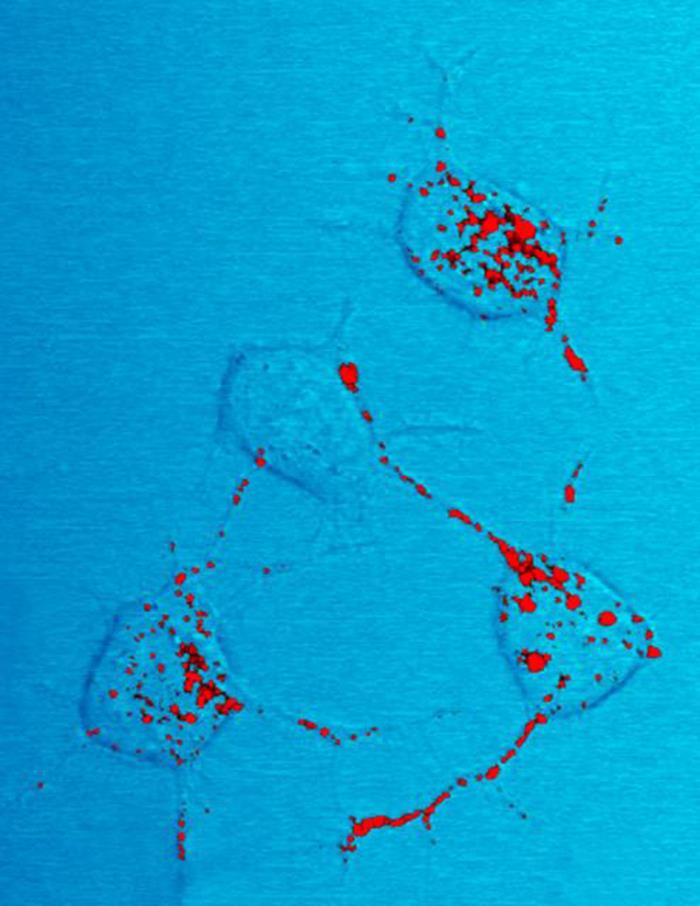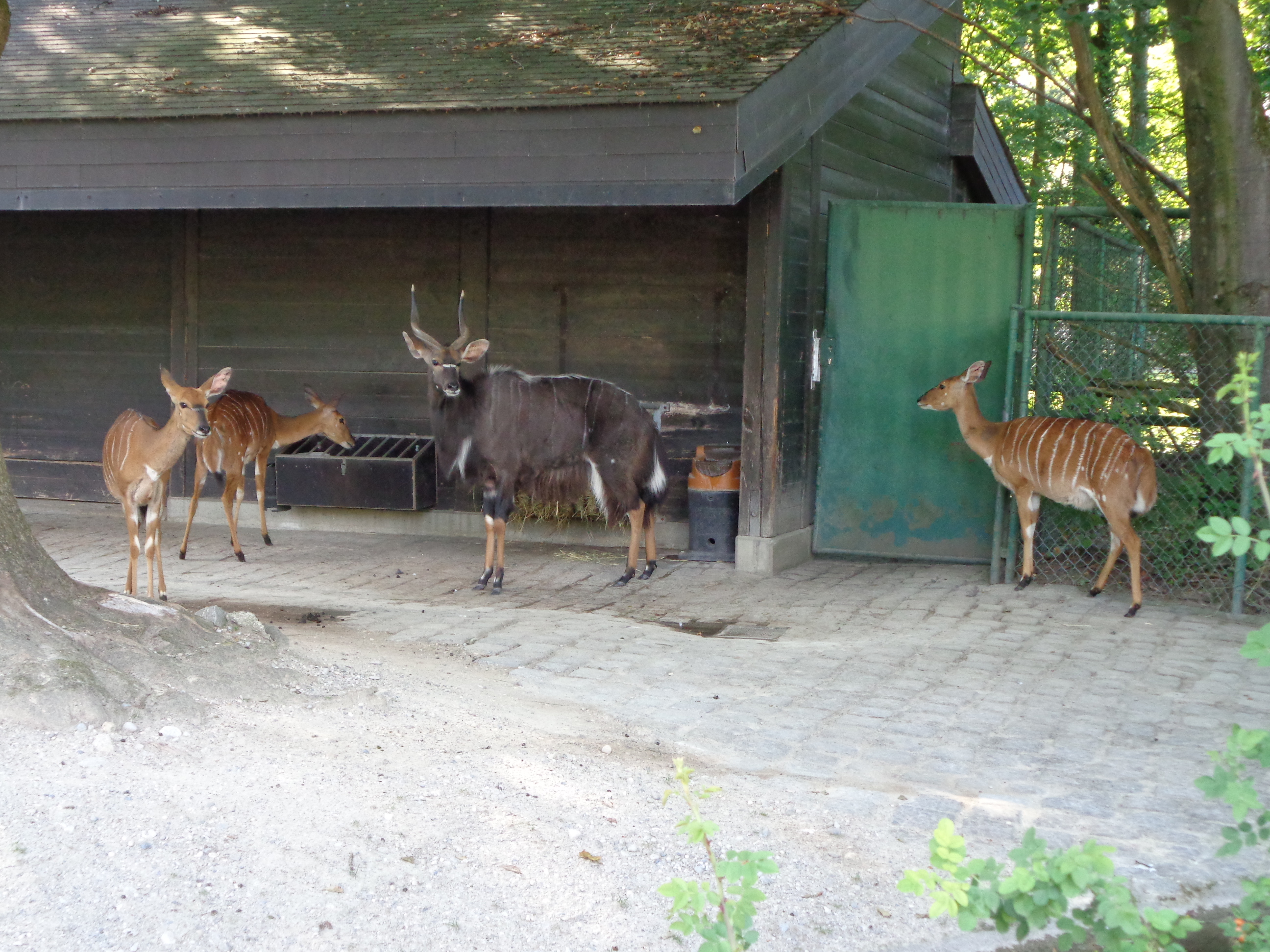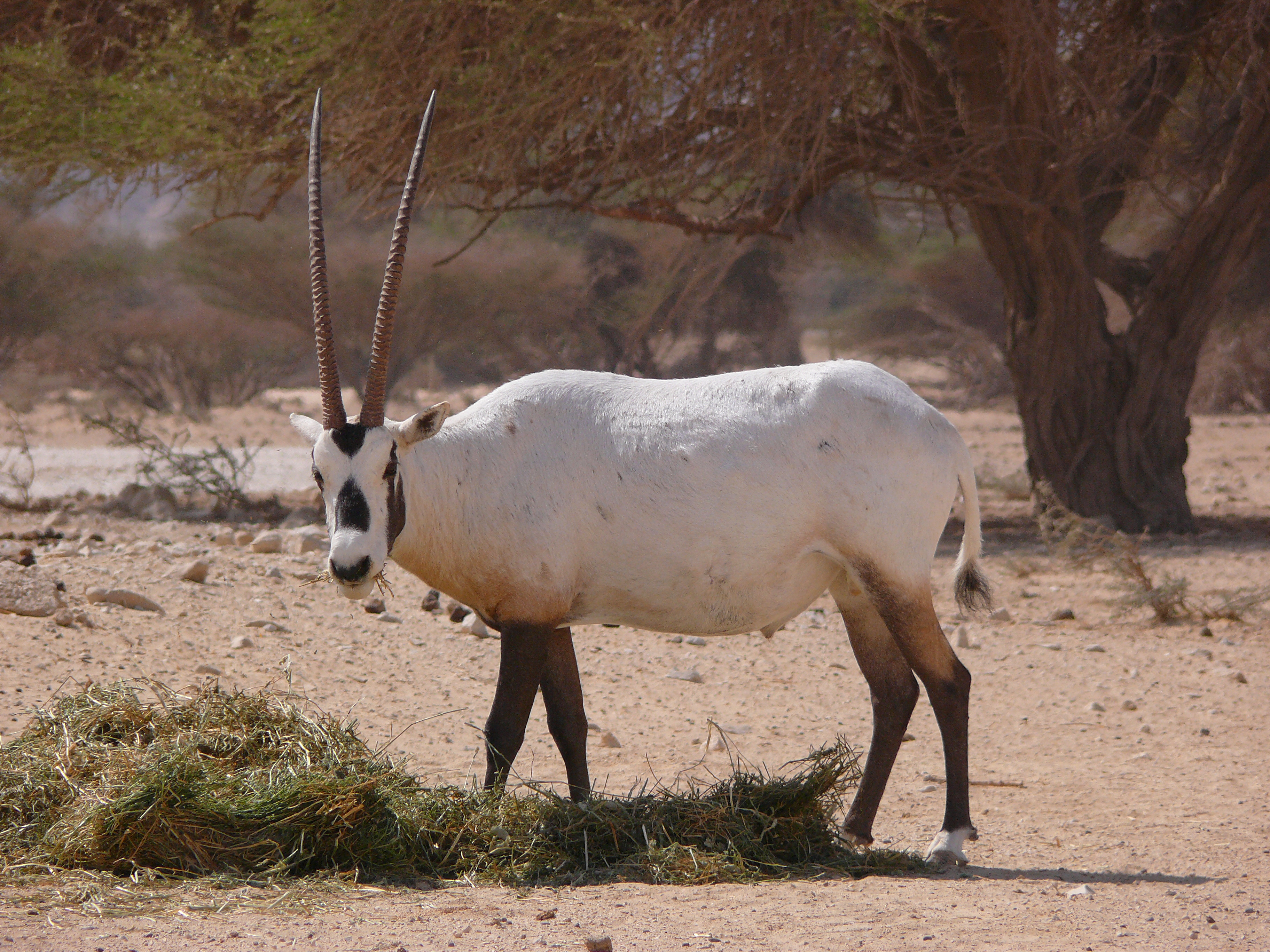|
Exotic Ungulate Encephalopathy
Exotic ungulate encephalopathy is a transmissible spongiform encephalopathy (TSE), or prion disease, identified in infected organs of zoo animals. This subgroup of the TSEs in captive animals was identified in zoo animals in Great Britain including species of greater kudu, nyala, gemsbok, the common eland, Arabian and scimitar oryx, an Ankole-Watusi cow, and an American bison. Studies indicate that transmission likely occurred via the consumption of feed supplemented with meat and bone meal, although some animals died after the British ban on ground offal Offal (), also called variety meats, pluck or organ meats, is the organs of a butchered animal. The word does not refer to a particular list of edible organs, which varies by culture and region, but usually excludes muscle. Offal may also refe ... in animal feed. All animals died during the 1990s, with the last death occurring in 1998. References Bovidae Transmissible spongiform encephalopathies Foodborne illnesses ... [...More Info...] [...Related Items...] OR: [Wikipedia] [Google] [Baidu] |
Transmissible Spongiform Encephalopathy
Transmissible spongiform encephalopathies (TSEs) are a group of progressive and fatal conditions that are associated with prions and affect the brain and nervous system of many animals, including humans, cattle, and sheep. According to the most widespread hypothesis, they are transmitted by prions, though some other data suggest an involvement of a ''Spiroplasma'' infection. Mental and physical abilities deteriorate and many tiny holes appear in the cortex causing it to appear like a sponge when brain tissue obtained at autopsy is examined under a microscope. The disorders cause impairment of brain function, including memory changes, personality changes and problems with movement that worsen chronically. TSEs of humans include Creutzfeldt–Jakob disease, Gerstmann–Sträussler–Scheinker syndrome, fatal familial insomnia, and kuru, as well as the recently discovered variably protease-sensitive prionopathy and familial spongiform encephalopathy. Creutzfeldt-Jakob disease itsel ... [...More Info...] [...Related Items...] OR: [Wikipedia] [Google] [Baidu] |
Prion
Prions are misfolded proteins that have the ability to transmit their misfolded shape onto normal variants of the same protein. They characterize several fatal and transmissible neurodegenerative diseases in humans and many other animals. It is not known what causes a normal protein to misfold, but the resulting abnormal three-dimensional structure confers infectious properties by collapsing nearby protein molecules into the same shape. The word ''prion'' is derived from the term, "proteinaceous infectious particle". In comparison to all other known infectious agents such as viroids, viruses, bacteria, fungi, and parasites, all of which contain nucleic acids ( DNA, RNA, or both), the hypothesized role of a protein as an infectious agent stands in contrast. Prion isoforms of the prion protein (PrP), whose specific function is uncertain, are hypothesized as the cause of transmissible spongiform encephalopathies (TSEs), including scrapie in sheep, chronic wasting disease (CWD) ... [...More Info...] [...Related Items...] OR: [Wikipedia] [Google] [Baidu] |
Disease
A disease is a particular abnormal condition that negatively affects the structure or function of all or part of an organism, and that is not immediately due to any external injury. Diseases are often known to be medical conditions that are associated with specific signs and symptoms. A disease may be caused by external factors such as pathogens or by internal dysfunctions. For example, internal dysfunctions of the immune system can produce a variety of different diseases, including various forms of immunodeficiency, hypersensitivity, allergies and autoimmune disorders. In humans, ''disease'' is often used more broadly to refer to any condition that causes pain, dysfunction, distress, social problems, or death to the person affected, or similar problems for those in contact with the person. In this broader sense, it sometimes includes injuries, disabilities, disorders, syndromes, infections, isolated symptoms, deviant behaviors, and atypical variations of structur ... [...More Info...] [...Related Items...] OR: [Wikipedia] [Google] [Baidu] |
Great Britain
Great Britain is an island in the North Atlantic Ocean off the northwest coast of continental Europe. With an area of , it is the largest of the British Isles, the largest European island and the ninth-largest island in the world. It is dominated by a maritime climate with narrow temperature differences between seasons. The 60% smaller island of Ireland is to the west—these islands, along with over 1,000 smaller surrounding islands and named substantial rocks, form the British Isles archipelago. Connected to mainland Europe until 9,000 years ago by a landbridge now known as Doggerland, Great Britain has been inhabited by modern humans for around 30,000 years. In 2011, it had a population of about , making it the world's third-most-populous island after Java in Indonesia and Honshu in Japan. The term "Great Britain" is often used to refer to England, Scotland and Wales, including their component adjoining islands. Great Britain and Northern Ireland now constitute the ... [...More Info...] [...Related Items...] OR: [Wikipedia] [Google] [Baidu] |
Greater Kudu
The greater kudu (''Tragelaphus strepsiceros'') is a woodland antelope found throughout eastern and southern Africa. Despite occupying such widespread territory, they are sparsely populated in most areas due to declining habitat, deforestation, and poaching. The greater kudu is one of two species commonly known as kudu, the other being the lesser kudu, ''T. imberbis''. Etymology of the name Kudu ( ), or koodoo, is the Khoikhoi name for this antelope. ''Trag-'' (Greek) denotes a goat and ''elaphos'' (Greek) a deer. ''Strepho'' (Greek) means "twist", and ''strepsis'' is "twisting". ''Keras'' (Greek) refers to the horn of the animal. Physical characteristics Greater kudus have a narrow body with long legs, and their coats can range from brown/bluish grey to reddish brown. They possess between 4 and 12 vertical white stripes along their torso. The head tends to be darker in colour than the rest of the body, and exhibits a small white chevron which runs between the eyes. Greater ... [...More Info...] [...Related Items...] OR: [Wikipedia] [Google] [Baidu] |
Nyala
The lowland nyala or simply nyala (''Tragelaphus angasii'') is a spiral-horned antelope native to southern Africa. It is a species of the family Bovidae and genus ''Tragelaphus'', previously placed in genus ''Nyala''. It was first described in 1849 by George French Angas. The body length is , and it weighs . The coat is maroon or rufous brown in females and juveniles, but grows a dark brown or slate grey, often tinged with blue, in adult males. Females and young males have ten or more white stripes on their sides. Only males have horns, long and yellow-tipped. It exhibits the highest sexual dimorphism among the spiral-horned antelopes. It is not to be confused with the endangered mountain nyala living in the Bale region of Ethiopia). The nyala is mainly active in the early morning and the late afternoon. It generally browses during the day if temperatures are and during the night in the rainy season. As a herbivore, the nyala feeds upon foliage, fruits and grasses, and requir ... [...More Info...] [...Related Items...] OR: [Wikipedia] [Google] [Baidu] |
Gemsbok
The gemsbok or South African oryx (''Oryx gazella'') is a large antelope in the genus ''Oryx''. It is native to the extremely dry, arid regions of Southern Africa; notably, the Kalahari Desert. Some authorities formerly classified the East African oryx, or ''beisa'' oryx, as a subspecies. The gemsbok is depicted on the coat of arms of Namibia, where the current population of the species is estimated at 373,000 individuals. In the town of Oranjemund, resident gemsbok wander freely around the streets, taking advantage of the vegetation in the town, such as the grass in parks, road medians, and browsing on low branches of the many trees. Name The name ''gemsbok'' is from Afrikaans, which itself is from the Dutch word of the same spelling, meaning "male chamois", composed of (“chamois”) + (“buck, male goat”). The Dutch is further from German ("chamois"). Although some superficial similarities in appearance (especially in the facial pattern) are noticed, the chamois and t ... [...More Info...] [...Related Items...] OR: [Wikipedia] [Google] [Baidu] |
Common Eland
The common eland (''Taurotragus oryx''), also known as the southern eland or eland antelope, is a savannah and plains antelope found in East and Southern Africa. It is a species of the family Bovidae and genus ''Taurotragus''. An adult male is around tall at the shoulder (females are shorter) and can weigh up to with a typical range of , for females). It is the second-largest antelope in the world, being slightly smaller on average than the giant eland. It was scientifically described by Peter Simon Pallas in 1766. Mainly a herbivore, its diet is primarily grasses and leaves. Common elands form herds of up to 500 animals, but are not territorial. The common eland prefers habitats with a wide variety of flowering plants such as savannah, woodlands, and open and montane grasslands; it avoids dense forests. It uses loud barks, visual and postural movements, and the flehmen response to communicate and warn others of danger. The common eland is used by humans for leather, meat, ... [...More Info...] [...Related Items...] OR: [Wikipedia] [Google] [Baidu] |
Arabian Oryx
The Arabian oryx (''Oryx leucoryx'') or white oryx is a medium-sized antelope with a distinct shoulder bump, long, straight horns, and a tufted tail. It is a bovid, and the smallest member of the genus ''Oryx'', native to desert and steppe areas of the Arabian Peninsula. The Arabian oryx was extinct in the wild by the early 1970s, but was saved in zoos and private reserves, and was reintroduced into the wild starting in 1980. In 1986, the Arabian oryx was classified as endangered on the IUCN Red List, and in 2011, it was the first animal to revert to vulnerable status after previously being listed as extinct in the wild. It is listed in CITES Appendix I. In 2016, populations were estimated at 1,220 individuals in the wild, including 850 mature individuals, and 6,000–7,000 in captivity worldwide. Etymology The taxonomic name ''Oryx leucoryx'' is from the Greek ' (gazelle or antelope) and ' (white). The Arabian oryx is also called the white oryx in English, ' in Hebrew, and is ... [...More Info...] [...Related Items...] OR: [Wikipedia] [Google] [Baidu] |
Scimitar Oryx
The scimitar oryx (''Oryx dammah''), also known as the scimitar-horned oryx and the Sahara oryx, is a ''Oryx'' species that was once widespread across North Africa. In 2000, it was declared extinct in the wild on the IUCN Red List. A captive bred group was released into an acclimation enclosure within the Ouadi Rimé-Ouadi Achim Faunal Reserve in 2016, then reintroduced into the wild. An additional 21 individuals were released into the acclimation enclosure in 2017. The first ones to be relocated were released into the wild in 2016 and have adapted well to their surroundings. In 2017, another herd of 75 scimitar-horned oryxes arrived in an operation led by Chad's Ministry of Environment and Fisheries and the Sahara Conservation Fund. In 2021, 60 new calves were born, bringing the number in the wild to about 400. This particular oryx can survive for months or even years without drinking water. A grazing animal, it derives most of its daily moisture intake from plants. The scimit ... [...More Info...] [...Related Items...] OR: [Wikipedia] [Google] [Baidu] |
Ankole-Watusi
The Ankole-Watusi is a modern American breed of domestic cattle. It derives from the Ankole group of Sanga cattle breeds of east and central Africa. It is characterized by very large horns. History The Ankole-Watusi derives from cattle of the Ankole group of Sanga cattle breeds of east and central Africa. Some of these were brought to Germany as zoo specimens in the early twentieth century, and from there spread to other European zoos. Some were imported to the United States, and in 1960 a herd was started in New York State by cross-breeding some of them with an unrelated Canadian bull. A breed society, the Ankole Watusi International Registry, was set up in 1983, and in 1989 a breed standard was drawn up. In 2016 the total number for the breed was thought to be approximately 1500 head, some 80% of them in the United States. Characteristics The Ankole-Watusi may be a number of different colors, but is usually red. The horns are unusually large, with a wide spread an ... [...More Info...] [...Related Items...] OR: [Wikipedia] [Google] [Baidu] |
Bison
Bison are large bovines in the genus ''Bison'' (Greek: "wild ox" (bison)) within the tribe Bovini. Two extant and numerous extinct species are recognised. Of the two surviving species, the American bison, ''B. bison'', found only in North America, is the more numerous. Although colloquially referred to as a buffalo in the United States and Canada, it is only distantly related to the true buffalo. The North American species is composed of two subspecies, the Plains bison, ''B. b. bison'', and the wood bison, ''B. b. athabascae'', which is the namesake of Wood Buffalo National Park in Canada. A third subspecies, the eastern bison (''B. b. pennsylvanicus'') is no longer considered a valid taxon, being a junior synonym of ''B. b. bison''. References to "woods bison" or "wood bison" from the eastern United States refer to this subspecies, not ''B. b. athabascae'', which was not found in the region. The European bison, ''B. bonasus'', or wisent, or zubr, or colloquially European buff ... [...More Info...] [...Related Items...] OR: [Wikipedia] [Google] [Baidu] |








